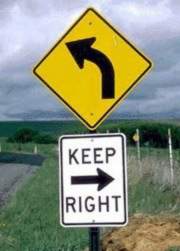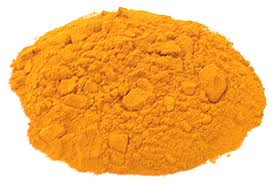
I realize that it can be intimidating to jump on into this corner of the Blogosphere and sift through 31 posts instructing you to do 31 weirdo rituals that may or may not help you see better. This Valentine's Day addendum is a way to sort that out. Below are all 31 exercises, categorized and described in brief. Look 'em over, pick one or two, try 'em out, and let me know what happens. You can also use the entry entitled "Your 5-Minute Regimen" as a launching point for exploring this stuff.
Eye Exercises:
- Sunning: Uses light, warmth and movement to help the eyes adjust to different lighting conditions.
- Palming: Uses darknes and warmth to help relax the eyes and brain.
- A Better Blink: Works to relax the eyes and face.
- Directionals: Eye movements to help strengthen the muscles around the eyes.
- The 3-Finger Game: Strengthens the ability to quickly focus on objects at different distances.
- The Phantom Finger: Uses optical illusions to work stereoscopic vision.
- Swaying & Swinging: Using movement of the head and body to help the eyes adjust to a world of motion.
- Sketching: Uses movement of the head to help define and sharpen images.
- A New Vision For Old Flyers: Uses printed words to help bring things into focus.
- Describing: Partner exercise that helps one see more detail.
- Seeing The Invisible: Works with the other senses to increase visual perception.
- Look Out: Relaxes the eyes by looking far away.
Breathing, Massaging and Stretching:
- Breathing: Basic technique for taking deep breaths during all eye exercises.
- Neck Stretches: Reduces tension in the body caused by eyestrain.
- Orbital Massage: Relieves eyestrain and headaches.
- Massaging Meridians: Explores pressure points around the body to help improve the eyesight.
- Buzzing: Yogic breath technique that brings relaxation to the eyes and body.
Shifts in Habit, Perspective and Attitude:
- Reading: Instructions on how to read and use computers in a way that reduces eyestrain.
- Changing Views: Using an apple (the fruit, not the computer) to see the world in many ways.
- Make Art: How art can help improve vision.
- See What You Want: Describes how vision loss can be linked to bad experiences and ways to overcome this.
Playing Games:
- Spooning Bubbles: Increases spatial awareness and improves depth perception by blowing bubbles.
- Ping Pong: Works focal ability by playing ping pong, tennis, or soccer.
- Skipping Rope: Strengthens peripheral vision with a jump rope.
- Anagram Games: Improves the eye-brain connection with a variety of word games.
Nutrition:
- Herbs: Lists herbs linked to vision improvement and how to use them.
- Listening to Color: Lists a few foods purported to be good for the eyes.
Essays:
- Light Text, Dark Background: Suggests adjusting your computer screen to help with reduce eyestrain.
- Contradictions: Details how and why different eye experts disagree with one another.
- Tears & Resources: List of books and other resources related to improving vision (and society).
...and for specific topics and eye conditions, look at the "areas of interest" on the sidebar to the left.

 writings by and visited people who all claimed to be "experts" in the field of something related to the eyes and their health. Some of these people have the clout of the Western Optometrical Complex to back them up, many others ousted themselves from that institution because they felt that prescribing stronger and stronger leses for people was hurting, not helping their eyesight. Others still were never professional optometrists, but people who entered into this work through a route of holistic and natural healing. With so many "experts" coming from so many philosophies, traditions and experiences, it is inevitable that their statements contradict one another.
writings by and visited people who all claimed to be "experts" in the field of something related to the eyes and their health. Some of these people have the clout of the Western Optometrical Complex to back them up, many others ousted themselves from that institution because they felt that prescribing stronger and stronger leses for people was hurting, not helping their eyesight. Others still were never professional optometrists, but people who entered into this work through a route of holistic and natural healing. With so many "experts" coming from so many philosophies, traditions and experiences, it is inevitable that their statements contradict one another.






 urmeric: In Chinese medicine there is a strong connection between the liver and the eyes. Bitter herbs which boost liver function are touted as being good for the vision. The Cambridge acupuncturist who recommended this to me had a strong Ayurvedic background, and turmeric root is a key herb in Ayurveda. It's also a yellow pigment and yellow pigmented foods are good for the eyes. Turmeric also has the advantage of being easy to use in cooking and is a powerful antioxidant.
urmeric: In Chinese medicine there is a strong connection between the liver and the eyes. Bitter herbs which boost liver function are touted as being good for the vision. The Cambridge acupuncturist who recommended this to me had a strong Ayurvedic background, and turmeric root is a key herb in Ayurveda. It's also a yellow pigment and yellow pigmented foods are good for the eyes. Turmeric also has the advantage of being easy to use in cooking and is a powerful antioxidant. Dandelion: Any liver booster first recommended by the same acupuncturist noted above. The leaves are perhaps the most nutritious greens on the market, being far richer in iron, calcium and vitamin A than even real champs like collards, kale and watercress. In an herbal context, it is dandelion root that is used as the plant's most potent form. The bitter root has an underlying sweetness that really pops out when taken as a glycerine-based tincture or roasted and then consumed as a tea.
Dandelion: Any liver booster first recommended by the same acupuncturist noted above. The leaves are perhaps the most nutritious greens on the market, being far richer in iron, calcium and vitamin A than even real champs like collards, kale and watercress. In an herbal context, it is dandelion root that is used as the plant's most potent form. The bitter root has an underlying sweetness that really pops out when taken as a glycerine-based tincture or roasted and then consumed as a tea.


